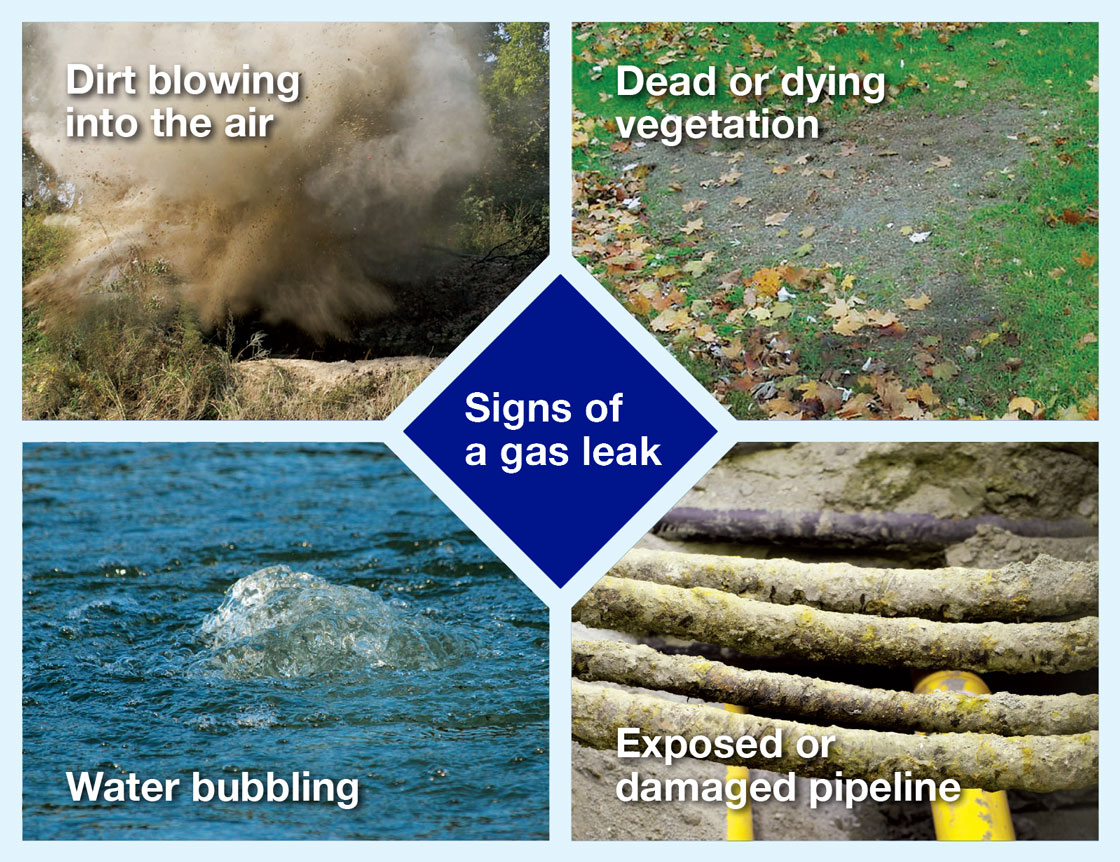| View in browser > |
 |
|
Welcome to National Grid’s Tips of the Trade for first responders. These tips are intended to help you respond safely and effectively to incidents involving natural gas and electricity. Please review them with your team.
|
|
| Be alert for all gas leak warning signs |
| Because natural gas is odorless and colorless, it can be difficult to detect. For this reason, utility companies, like National Grid, add an odorant called mercaptan, which smells like sulfur or rotten eggs. |
| Although mercaptan often aids in detection of natural gas leaks, you may not be able to smell this odorant if you have been exposed to it for too long, or if the mercaptan odor is masked by other odors. Mercaptan may also be stripped from the gas due to chemical and physical processes. This effect is known as “odor fade.” |
| Consequently, you can never rely on your nose alone to detect a natural gas leak! Train your senses of sight and hearing to identify signs of leaking gas, and confirm all suspected leaks with a combustible gas indicator (CGI). When responding to suspected gas leaks, always wear PPE and SCBA. |
 |
 |
|
| Watch for these leak warning signs. |
| Look for: |
|
|
| • |
 |
Dirt blowing into the air from a hole in the ground |
|
| • |
 | Continuous bubbling in water |
|
| • |
 |
A damaged connection to a gas appliance |
| • |
 |
An exposed pipeline after an earthquake, fire, flood or other disaster |
| • |
 |
A fire or explosion nearby |
| • |
 |
Dead or dying vegetation in an otherwise moist area over or near a gas pipeline |
 Listen for a hissing, whistling or roaring sound as gas escapes from a pipe. Listen for a hissing, whistling or roaring sound as gas escapes from a pipe. |
|
|
|
|
| Confirm suspected gas leaks. |
If you have been trained to do so, use CGI to confirm gas leaks and whether they pose an explosion risk. Before entering a building, assess the hazard level around the building as well as nearby buildings. Never enter a building unless gas concentrations are well below the lower explosive limit of 5 percent gas in air. |
| If you suspect a gas leak: |
| • |
 |
Eliminate ignition hazards, such as open flames, cigarettes (including e-cigarettes or vape pens), phones and tools that create sparks (including battery-powered tools) |
|
| • |
 |
Do not use doorbells, garage door openers and light switches |
|
| • |
 |
Evacuate the public at least 100 to 800 meters (or 330 feet to ½ mile) from the leak source, per the guidance in Guide 115 of the DOT Emergency Response Guidebook. |
|
| |
|
| Remember the importance of adherence. |
Because natural gas leaks have the potential to produce catastrophic consequences, such as large fires and explosions, staying alert for all gas leak warning signs is critical to protecting yourself, your crew and the community. |
| For more first responder safety information, visit firstresponder.ngridsafety.com. |
|
|
|
| |
| |
|
| To report emergencies, call 911 and National Grid immediately. |
| |
 |
| In case of gas emergencies: |
 |
Long Island and the Rockaways:
911 and 1-800-490-0045 |
 |
Metro New York:
911 and 1-718-643-4050 |
 |
Upstate New York:
911 and 1-800-892-2345 |
 |
Massachusetts:
911 and 1-800-233-5325 |
 |
Rhode Island:
911 and 1-800-640-1595 |
|
|
|
|
| |
|
|
|
| |
| |
|
 |
#13034 © 2021 Culver Media, LLC |
|
| |
|
|
|
 |
|
|